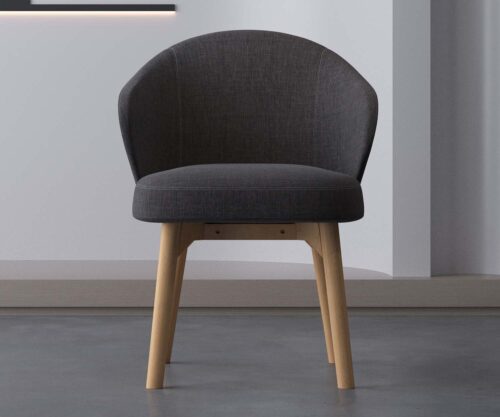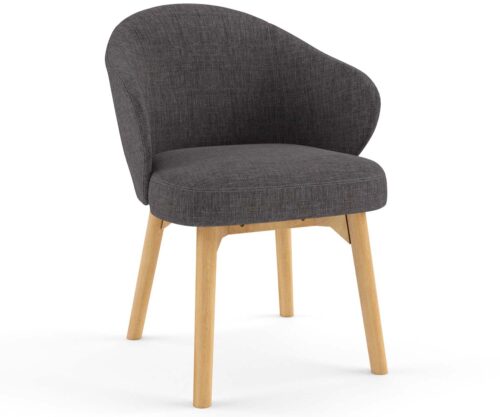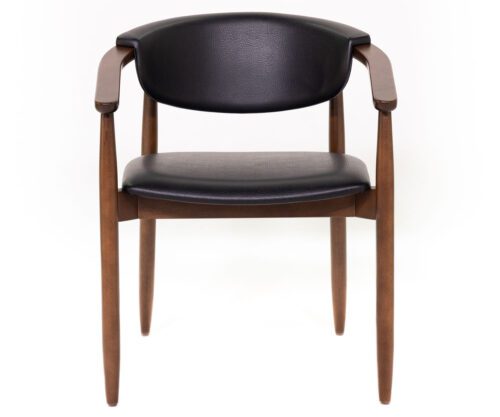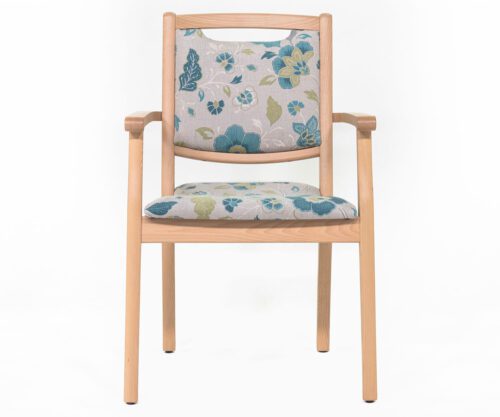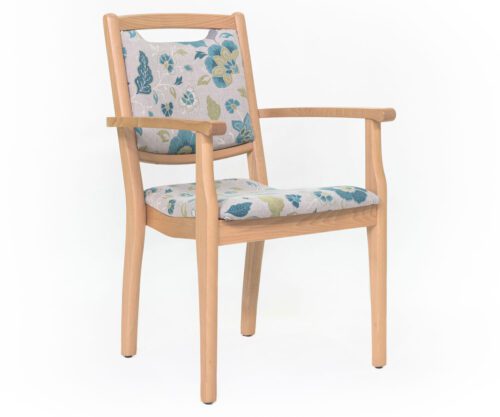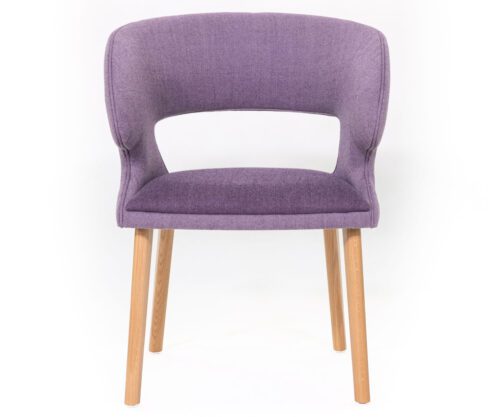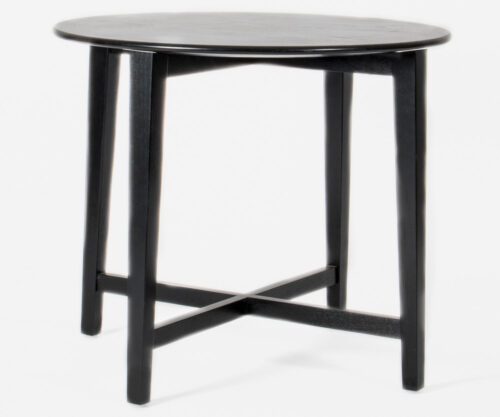Aged Care Outdoor Furniture and Other Factors in Designing Outdoor Spaces for the Elderly
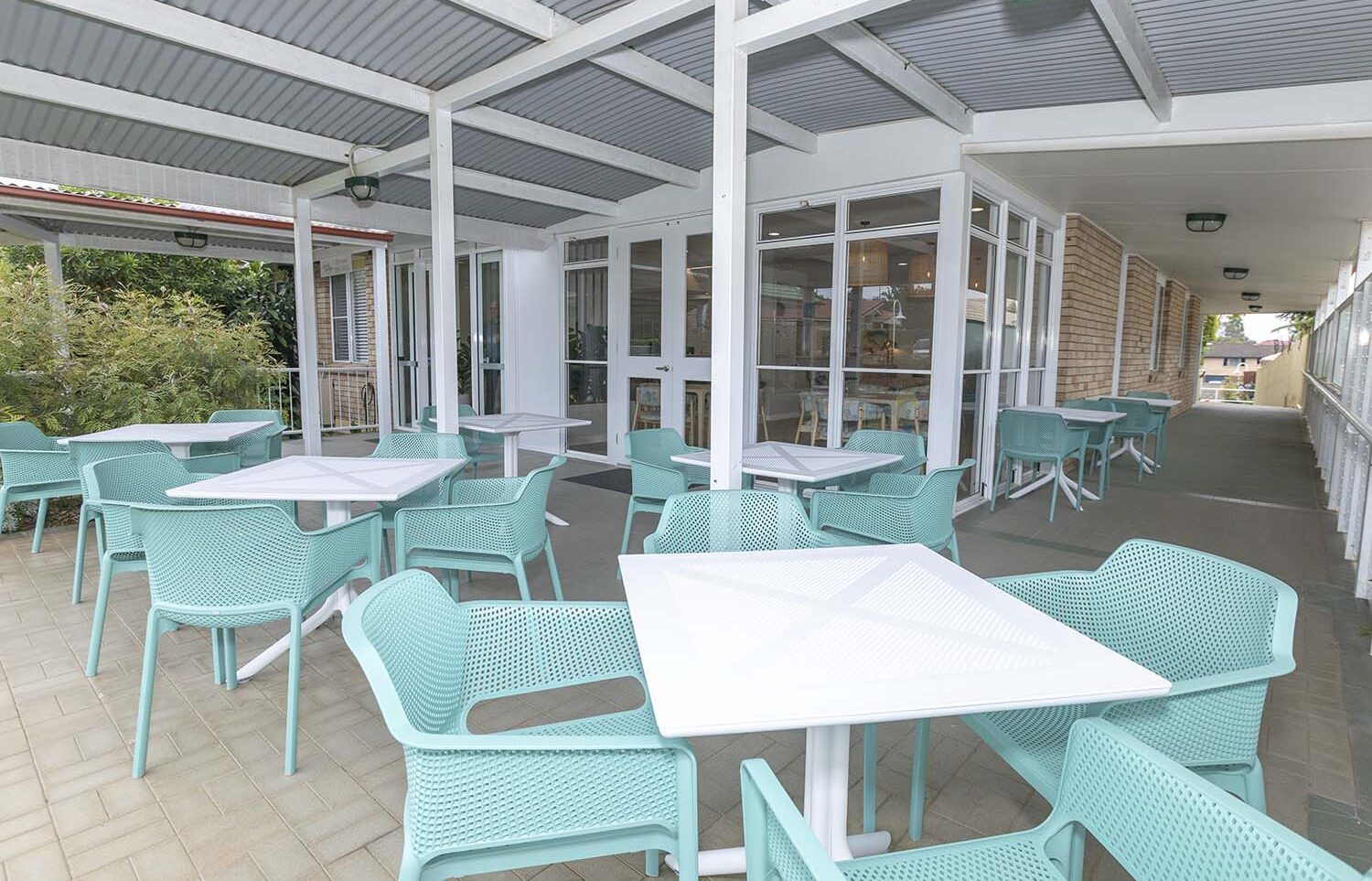
Improving outdoor spaces for aged care and retirement living is about more than just choosing the right outdoor furniture
As Residential Aged Care Facilities seek to comply with the Australian Aged Care Quality Standards, many will turn their focus to ensuring that their service environment is safe and comfortable and promotes a consumer’s independence, function, and enjoyment (as per Standard 5 – Organisation’s Service Environment).
A vital part of an aged care service environment is the outdoor spaces provided for residents and we’re talking about more than just choosing the right aged care outdoor furniture (although sitting and enjoying well-designed aged care outdoor furniture is one of the most frequent uses of aged care outdoor spaces… but more on that later!).
By improving accessibility to outdoor spaces, aged care and retirement living providers go some way towards reducing depression, stress, falls, and vitamin D deficiency among residents. After all, “Nature is restorative and has healing powers” (Kaplan 1995, 2001).
There are 5 common barriers to accessing aged care and retirement living outdoor spaces for residents and staff:
1. Design of the outdoor space: Providing opportunities for residents to enjoy nature comfortably and independently.
When designing aged care outdoor spaces, there are 4 key design factors that need to be considered including seating, garden greenery, pathways, and shelter.
Seating: Sitting in well-designed aged care outdoor furniture is one of the most frequent uses of outdoor spaces within aged care and retirement living. Aged care outdoor furniture should be available in a range of seating styles and should have a sturdy construction made from weather-resistant materials such as UV-stabilized polypropylene reinforced with glass fiber.
Chair design should follow evidence-based recommendations for aged care chair design with a focus on assisting in independent sit-to-stand transitions including appropriate seat height, seat depth, and armrests.
Choosing the wrong aged care outdoor furniture can negatively impact residents and staff, particularly when it comes to the mobility and independence of residents. Many residents have restricted mobility which may make it difficult to get in and out of poorly designed chairs without asking for assistance first. Lack of independence due to poor chair design can lead to depression, under-nutrition due to reduced intake of food or drink, reduced social interaction, an increase in the chance of falls, and loss of confidence due to falling. The mobility and independence of residents can be maintained with suitable aged care seating design.
Seating should be easily accessible and placed at regular intervals around the outdoor space to accommodate resting and to give people options about how they use the space.
Garden greenery: Plants, trees and flowers play a large role in the use of outdoor spaces, giving residents the opportunity to engage with and about nature; to touch, view, smell and discuss plants and flowers.
Walking among trees and seeing and interacting with fauna also has positive impacts on residents’ moods and feelings of wellbeing.
Pathways: Adequate pathways and walking surfaces enable aged care residents to safely make their way through outdoor spaces. Pathways should not be steep or sloping, too narrow or have uneven surfaces.
For people with dementia, who often forget where they’re going and where they’ve come from, it’s a good idea to incorporate a looped pathway that leads residents along a journey and then returns them to where they began. Paths should also be edged with contrasting colour or a raised edge to support way-finding and to define the change from paving to the garden.
2. Design of the main building: Ensuring equitable access to the outdoor space from the main building.
Physical barriers to accessing outdoor spaces can include high doorframes or doorsteps that are difficult to cross over, particularly when people are using a wheelchair or walker. Heavy or locked doors can also be a barrier with aged care residents preferring automatic over manual doors.
Proximity is another physical barrier. The longer the distance between the garden access points and the resident’s main living area, the less likely the residents were to approach and use the outdoor space.
Those living in rooms not at ground level are even less likely to access outdoor areas due to the need to navigate stairs or use an elevator which is not always possible to do on their own.
3. Safety concerns: Providing a safe and observable outdoor area for residents to enjoy the outdoors independently.
Safety can be the defining factor in whether an outdoor space is allowed to be used. According to a 2019 Australian Systematic Review of Outdoor Spaces in Nursing Homes, staff favored outdoor spaces which were completely visible from the inside, allowing them to keep an eye on residents when there were outdoors.
Safety can also be built into the design of the outdoor space. Paths and paving should be level, smooth, slip-resistant and low glare. There should be ample shade provided. Building thresholds should be sheltered to allow residents’ eyes time to adjust to the change in lighting levels. Aged care outdoor furniture should be fit-for-purpose, well-maintained and able to withstand the harsh Australian climate. Plants should be non-toxic and garden features should be strong and sturdy.
When considering people with Dementia, gardens should be secured with 1.8m fencing. Entrances and exits not intended for use by people with Dementia should be disguised with no obvious locks or handles.
4. Access to shelter: Ensuring spaces are designed to provide opportunities for outdoor living even when in adverse or unfavorable weather conditions.
Adverse or unfavorable weather conditions are a barrier for aged care residents using outdoor spaces. Hot weather, like that experienced in Australia, will also prevent residents from going outdoors, due to heat discomfort or a fear of getting sunburnt.
There are things that can be done to guard against the elements such as incorporating all-year shelter and heated outdoor areas. Providing plenty of shade for sunny days and warm sitting areas in the winter will encourage people to venture outdoors.
5. Social Activities: Providing opportunities for residents to socialize and interact with key people in their lives.
Socialization with friends, family and pets is a valuable opportunity for aged care residents to enhance their quality of life. Setting up outdoor areas to encourage conversation and interaction optimizes a resident’s sense of belonging and independence.
Interactive garden features can be included that bring people together such as men’s sheds, flower gardens and bird baths. Interaction between family members can be encouraged by including child-friendly elements or areas for pets. Large and small groups of aged care outdoor furniture can be placed to facilitate group activities or meals.
Quieter, passive areas can also be included to provide refuge. Finally, plenty of shelter should be provided to accommodate family visits and outdoor group activities.
And finally, the secret ingredient to ensuring the success of aged care outdoor spaces…
The success of aged care outdoor spaces depends greatly upon the staff’s understanding of the design. By understanding and recognizing the various elements and their functions and use, staff will feel more empowered to create activities that encourage the use of the outdoor space.
Aged Care Outdoor Furniture should be fit-for-purpose: striking a balance between comfort, ease of use, and independence
Providing fit-for-purpose outdoor seating within aged care facilities is an issue of equity. Finding the right balance between seat height, depth and armrests go a long way toward proving comfortable and easy-to-use chairs for a larger portion of the aged care population.
FAQs about Designing Outdoor Spaces for the Elderly
Why is outdoor space design important for the elderly?
Outdoor spaces provide numerous health benefits for the elderly, including exposure to natural light, fresh air, and opportunities for physical activity, socialization, and relaxation.
What are key considerations when designing outdoor spaces for the elderly?
Consider factors such as accessibility, safety, comfortable seating, shade, and a mix of sensory elements. Design elements should cater to the specific needs and preferences of older individuals.
How can I make outdoor spaces more accessible for elderly individuals with mobility challenges?
Ensure pathways are wide and flat, use non-slip surfaces, incorporate ramps or gently sloping paths, and minimize tripping hazards. Accessible seating areas and rest spots should be strategically placed.
What role does landscaping play in creating a senior-friendly outdoor environment?
Landscaping should balance aesthetics with functionality. Choose low-maintenance plants, incorporate sensory elements like fragrant flowers or textured foliage, and create clear visual contrasts for those with vision impairments.
Are there specific features that can enhance the safety of outdoor spaces for the elderly?
Install handrails along pathways, use slip-resistant materials, provide adequate lighting for evening use, and ensure that seating is stable and easy to get in and out of. Regular maintenance is also crucial for safety.
How can outdoor spaces promote physical activity for the elderly?
Design spaces that encourage gentle exercise, such as walking paths, low-impact exercise equipment, and designated areas for activities like tai chi or yoga. Ensure that these spaces are easily accessible and well-lit.
What types of seating are best for elderly individuals in outdoor settings?
Choose comfortable, supportive seating with armrests for ease of getting up and down. Consider options with cushions for added comfort and use materials that are weather-resistant and easy to clean.
How can outdoor spaces facilitate socialization among the elderly?
Arrange seating in clusters to encourage group conversations, create communal areas for activities, and incorporate features like benches or picnic tables that facilitate social interaction. Consider shade structures to make these areas comfortable year-round.
Should outdoor spaces for the elderly include shaded areas?
Yes, shading is crucial to protect against excessive sun exposure. Use pergolas, umbrellas, or natural elements like trees to provide shade. This ensures that the outdoor space is usable in various weather conditions.
Can outdoor spaces be designed to accommodate individuals with cognitive impairments?
Yes, consider clear signage, simple wayfinding, and recognizable landmarks. Avoid overly complex designs and provide familiar and comfortable elements to create a calming and dementia-friendly environment.
How can I involve the elderly residents in the design process of outdoor spaces?
Conduct surveys or workshops to gather input on preferences and needs. Involve residents in choosing plants, colors, and features, fostering a sense of ownership and connection to the outdoor space.
Durable, quality outdoor furniture designed and manufactured with the Australian climate in mind
More News
Aged Care Outdoor Furniture and Other Factors in Designing Outdoor Spaces for the Elderly

Improving outdoor spaces for aged care and retirement living is about more than just choosing the right outdoor furniture
As Residential Aged Care Facilities seek to comply with the Australian Aged Care Quality Standards, many will turn their focus to ensuring that their service environment is safe and comfortable and promotes a consumer’s independence, function, and enjoyment (as per Standard 5 – Organisation’s Service Environment).
A vital part of an aged care service environment is the outdoor spaces provided for residents and we’re talking about more than just choosing the right aged care outdoor furniture (although sitting and enjoying well-designed aged care outdoor furniture is one of the most frequent uses of aged care outdoor spaces… but more on that later!).
By improving accessibility to outdoor spaces, aged care and retirement living providers go some way towards reducing depression, stress, falls, and vitamin D deficiency among residents. After all, “Nature is restorative and has healing powers” (Kaplan 1995, 2001).
There are 5 common barriers to accessing aged care and retirement living outdoor spaces for residents and staff:
1. Design of the outdoor space: Providing opportunities for residents to enjoy nature comfortably and independently.
When designing aged care outdoor spaces, there are 4 key design factors that need to be considered including seating, garden greenery, pathways, and shelter.
Seating: Sitting in well-designed aged care outdoor furniture is one of the most frequent uses of outdoor spaces within aged care and retirement living. Aged care outdoor furniture should be available in a range of seating styles and should have a sturdy construction made from weather-resistant materials such as UV-stabilized polypropylene reinforced with glass fiber.
Chair design should follow evidence-based recommendations for aged care chair design with a focus on assisting in independent sit-to-stand transitions including appropriate seat height, seat depth, and armrests.
Choosing the wrong aged care outdoor furniture can negatively impact residents and staff, particularly when it comes to the mobility and independence of residents. Many residents have restricted mobility which may make it difficult to get in and out of poorly designed chairs without asking for assistance first. Lack of independence due to poor chair design can lead to depression, under-nutrition due to reduced intake of food or drink, reduced social interaction, an increase in the chance of falls, and loss of confidence due to falling. The mobility and independence of residents can be maintained with suitable aged care seating design.
Seating should be easily accessible and placed at regular intervals around the outdoor space to accommodate resting and to give people options about how they use the space.
Garden greenery: Plants, trees and flowers play a large role in the use of outdoor spaces, giving residents the opportunity to engage with and about nature; to touch, view, smell and discuss plants and flowers.
Walking among trees and seeing and interacting with fauna also has positive impacts on residents’ moods and feelings of wellbeing.
Pathways: Adequate pathways and walking surfaces enable aged care residents to safely make their way through outdoor spaces. Pathways should not be steep or sloping, too narrow or have uneven surfaces.
For people with dementia, who often forget where they’re going and where they’ve come from, it’s a good idea to incorporate a looped pathway that leads residents along a journey and then returns them to where they began. Paths should also be edged with contrasting colour or a raised edge to support way-finding and to define the change from paving to the garden.
2. Design of the main building: Ensuring equitable access to the outdoor space from the main building.
Physical barriers to accessing outdoor spaces can include high doorframes or doorsteps that are difficult to cross over, particularly when people are using a wheelchair or walker. Heavy or locked doors can also be a barrier with aged care residents preferring automatic over manual doors.
Proximity is another physical barrier. The longer the distance between the garden access points and the resident’s main living area, the less likely the residents were to approach and use the outdoor space.
Those living in rooms not at ground level are even less likely to access outdoor areas due to the need to navigate stairs or use an elevator which is not always possible to do on their own.
3. Safety concerns: Providing a safe and observable outdoor area for residents to enjoy the outdoors independently.
Safety can be the defining factor in whether an outdoor space is allowed to be used. According to a 2019 Australian Systematic Review of Outdoor Spaces in Nursing Homes, staff favored outdoor spaces which were completely visible from the inside, allowing them to keep an eye on residents when there were outdoors.
Safety can also be built into the design of the outdoor space. Paths and paving should be level, smooth, slip-resistant and low glare. There should be ample shade provided. Building thresholds should be sheltered to allow residents’ eyes time to adjust to the change in lighting levels. Aged care outdoor furniture should be fit-for-purpose, well-maintained and able to withstand the harsh Australian climate. Plants should be non-toxic and garden features should be strong and sturdy.
When considering people with Dementia, gardens should be secured with 1.8m fencing. Entrances and exits not intended for use by people with Dementia should be disguised with no obvious locks or handles.
4. Access to shelter: Ensuring spaces are designed to provide opportunities for outdoor living even when in adverse or unfavorable weather conditions.
Adverse or unfavorable weather conditions are a barrier for aged care residents using outdoor spaces. Hot weather, like that experienced in Australia, will also prevent residents from going outdoors, due to heat discomfort or a fear of getting sunburnt.
There are things that can be done to guard against the elements such as incorporating all-year shelter and heated outdoor areas. Providing plenty of shade for sunny days and warm sitting areas in the winter will encourage people to venture outdoors.
5. Social Activities: Providing opportunities for residents to socialize and interact with key people in their lives.
Socialization with friends, family and pets is a valuable opportunity for aged care residents to enhance their quality of life. Setting up outdoor areas to encourage conversation and interaction optimizes a resident’s sense of belonging and independence.
Interactive garden features can be included that bring people together such as men’s sheds, flower gardens and bird baths. Interaction between family members can be encouraged by including child-friendly elements or areas for pets. Large and small groups of aged care outdoor furniture can be placed to facilitate group activities or meals.
Quieter, passive areas can also be included to provide refuge. Finally, plenty of shelter should be provided to accommodate family visits and outdoor group activities.
And finally, the secret ingredient to ensuring the success of aged care outdoor spaces…
The success of aged care outdoor spaces depends greatly upon the staff’s understanding of the design. By understanding and recognizing the various elements and their functions and use, staff will feel more empowered to create activities that encourage the use of the outdoor space.
Aged Care Outdoor Furniture should be fit-for-purpose: striking a balance between comfort, ease of use, and independence
Providing fit-for-purpose outdoor seating within aged care facilities is an issue of equity. Finding the right balance between seat height, depth and armrests go a long way toward proving comfortable and easy-to-use chairs for a larger portion of the aged care population.
FAQs about Designing Outdoor Spaces for the Elderly
Why is outdoor space design important for the elderly?
Outdoor spaces provide numerous health benefits for the elderly, including exposure to natural light, fresh air, and opportunities for physical activity, socialization, and relaxation.
What are key considerations when designing outdoor spaces for the elderly?
Consider factors such as accessibility, safety, comfortable seating, shade, and a mix of sensory elements. Design elements should cater to the specific needs and preferences of older individuals.
How can I make outdoor spaces more accessible for elderly individuals with mobility challenges?
Ensure pathways are wide and flat, use non-slip surfaces, incorporate ramps or gently sloping paths, and minimize tripping hazards. Accessible seating areas and rest spots should be strategically placed.
What role does landscaping play in creating a senior-friendly outdoor environment?
Landscaping should balance aesthetics with functionality. Choose low-maintenance plants, incorporate sensory elements like fragrant flowers or textured foliage, and create clear visual contrasts for those with vision impairments.
Are there specific features that can enhance the safety of outdoor spaces for the elderly?
Install handrails along pathways, use slip-resistant materials, provide adequate lighting for evening use, and ensure that seating is stable and easy to get in and out of. Regular maintenance is also crucial for safety.
How can outdoor spaces promote physical activity for the elderly?
Design spaces that encourage gentle exercise, such as walking paths, low-impact exercise equipment, and designated areas for activities like tai chi or yoga. Ensure that these spaces are easily accessible and well-lit.
What types of seating are best for elderly individuals in outdoor settings?
Choose comfortable, supportive seating with armrests for ease of getting up and down. Consider options with cushions for added comfort and use materials that are weather-resistant and easy to clean.
How can outdoor spaces facilitate socialization among the elderly?
Arrange seating in clusters to encourage group conversations, create communal areas for activities, and incorporate features like benches or picnic tables that facilitate social interaction. Consider shade structures to make these areas comfortable year-round.
Should outdoor spaces for the elderly include shaded areas?
Yes, shading is crucial to protect against excessive sun exposure. Use pergolas, umbrellas, or natural elements like trees to provide shade. This ensures that the outdoor space is usable in various weather conditions.
Can outdoor spaces be designed to accommodate individuals with cognitive impairments?
Yes, consider clear signage, simple wayfinding, and recognizable landmarks. Avoid overly complex designs and provide familiar and comfortable elements to create a calming and dementia-friendly environment.
How can I involve the elderly residents in the design process of outdoor spaces?
Conduct surveys or workshops to gather input on preferences and needs. Involve residents in choosing plants, colors, and features, fostering a sense of ownership and connection to the outdoor space.
Durable, quality outdoor furniture designed and manufactured with the Australian climate in mind
Commercial furniture by room
Based in Brisbane, we’re an Australian manufacturer of health and aged care furniture, retirement living furniture, hotel and accommodation furniture and student accommodation furniture. We also supply a range of commercial office furniture.
Is your commercial furniture built to last?
Not sure? Get your Furniture Quality Checklist today.
Discover what you need to know before purchasing commercial furniture. Confidently order furniture without compromising on quality, style, and the comfort and safety of your clients.
PLUS, sign up for Retirement Living and Aged Care Industry News.

